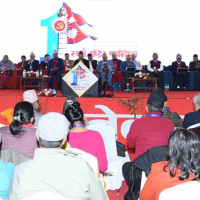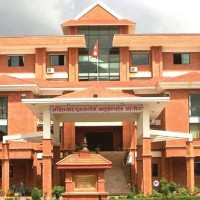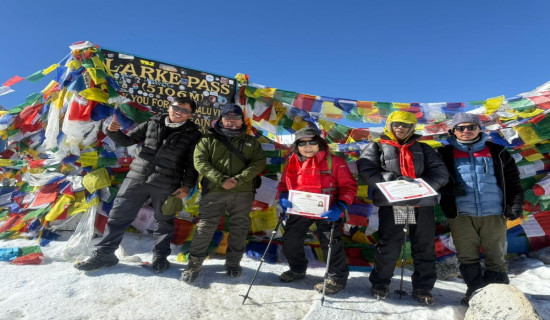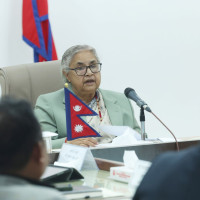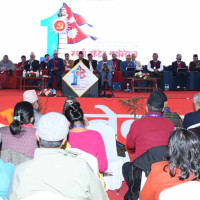- Monday, 15 December 2025
Loss of Kathmandu’s inner-city open spaces impairs social life
Kathmandu, Feb. 5: Haku Maharjan remembers accompanying his father, as a child, to the space in front of the Kot Pati in Mangalbazaar, Lalitpur to sell vegetables. The brick-paved area became an open-air market on the weekends, the 67-year-old recalls. “Farmers came from all over the [Lalitpur] district to sell their produce here,” he said.
The space has been turned into a vehicle parking lot.
Similarly, when Padam Bir Bajracharya lived with his parents in a rented house in Makhan, Kathmandu in the 1980s, the entire street was open and free to play in. “All the kids of the community would gather in front of the Makhan Mahadev Temple and play marbles. There was ample space for us to run around and play in,” Bajracharya, who is now 52, shared.
Makhan has also become a parking zone in recent years.
Tejindra Shrestha, 65, was born and raised in Wotu, Kathmandu. There too, he has seen the temple of Wochu Bhandrakali get swallowed by a mass of motorcycles. “And as if that was not enough, people pile up construction materials on the ground that was once part of the temple complex,” he grumbled .
Nearby, the Tadha Bahal and Chidha Bahal were areas where the elderly would gather to bask in the sun in the winter. Now – no prizes for guessing – they too have been jammed with bikes.
“People call the core cities of Kathmandu, Lalitpur and Bhaktapur cramped but they are not. They have ample open spaces in the forms of Lachhi, Baha, Bahi, Chowk and Nani. But they have now been occupied by ever growing number of vehicles and construction materials,” Shrestha made a claim that is hard to refute.
Conservation Architect Dr. Jharna Joshi called this occupation part of a larger trend of “misuse and underuse” of such communal spaces. “They are either neglected – literally overshadowed by the houses growing ever taller around them – or turned into vehicle parks, places to unload building materials and sites to place electric transformers in.”
And this trend comes at the cost of culture, argues culture expert Om Dhaubhadel. These places were built to enhance social life, bring people together and be areas for feasts and gatherings.
“These used to be areas that brought people together. They would get to know their neighbours and learn what was happening in their localities,” he said, adding, “These were also platforms for cultural activities where folk music and dances would be performed, deities worshipped and festivals held.
“Kathmandu’s open spaces transcended their physicality and became part of people’s lives and societies’ existence. They were integral to social customs and traditions,” Dhaubhadel said.
Maharjan believes that they were also arenas that facilitated the transfer of indigenous skills and knowledge. Guthis would bring new entrants to Chowks in front of Natyeshwor temples to teach them musical instruments, he shared. Fathers would teach their sons their family occupations like painting or carpentry in their local Lachhis and Bahals. Children learnt etiquette by interacting with seniors in these community spaces.
“Kathmandu’s culture was vibrant and its social bonds strong because of the open spaces inside our communities,” he claimed.
The open areas also provide refuge during earthquakes and natural calamities. Fire hydrants may also be installed there. Disasters strike without warning and when they do, bikes should not be obstructing often the only place people can escape to, Joshi said.
Furthermore, these inner-city spaces often have monuments, shrines, statues and temples which may be damaged by motorcycles or building materials like sand and gravel poured over them. On December 21 last year, a truck unloading stones in Saugal, Lalitpur damaged a historic Chaitya.
“These communal centres are essential to our local culture. Unfortunately, we seem to have forgotten that,” Dhaubhadel lamented.




